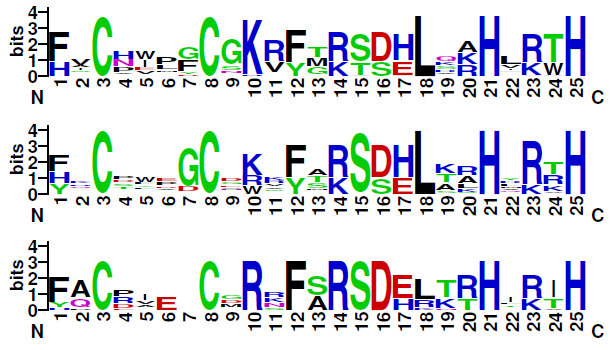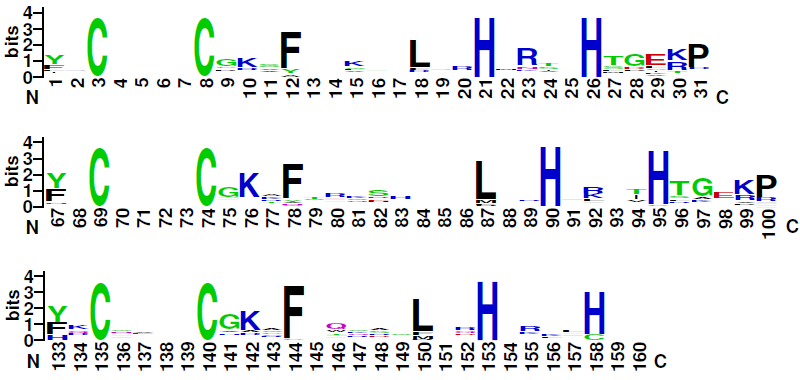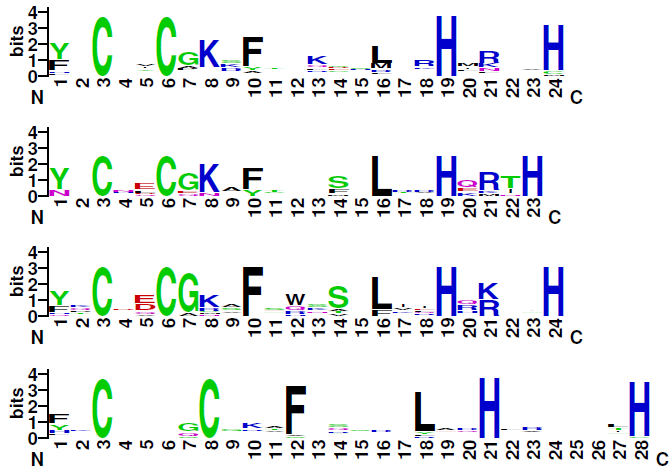| 2.3 |
Class: C2H2 zinc finger factors |
| Description: |
TRANSFAC® class description C0001: Zinc finger motif of TFIIIA/Krueppel type. Each finger comprises 2 cysteine and 2 histidine residues coordinating one zinc ion, in some cases one histidine is replaced by another cysteine. The zinc ion is essential for DNA-binding. The first half of the finger sequence is generally organized in two antiparallel beta-strands, the second half as an alpha-helix and partly as an 310-helix. Hydrophobic contacts between the beta-strands and the alpha-helix are formed by the conserved phenylalanine and leucine residues. The alpha-helix binds to DNA through the major groove. The finger link frequently is TGEKPY. |
| Aligned domain sequences: |
Alignment of C2H2 zinc finger domains
|
| Logo plot: |
Family 2.3.1, zinc finger regions:

Subfamilies 2.3.1.1, 2.3.1.2, and 2.3.1.3:
 |
Family 2.3.1, zinc finger motifs:
 |
Subfamilies 2.3.1.1, 2.3.1.2, and 2.3.1.3, zinc finger motifs:
 |
Family 2.3.2, zinc finger regions:

(The missing positions 32-66 and 101-132 are inter-ZF regions, which may have inserts of highly variable length.The enhanced distance between the otherwise fixed phenylalanine in position 78 and leucine in position 87 in the second zinc finger motif is due to an insertion of three residues in only one ZF, the second one in AEBP2; see alignment.) |
Family 2.3.2, zinc finger motifs:
 | Subfamilies 2.3.2.1, 2.3.2.2, 2.3.2.3 and 2.3.2.4, zinc finger motifs:
 |
Family 2.3.5, BED-type zinc finger regions:
 |







